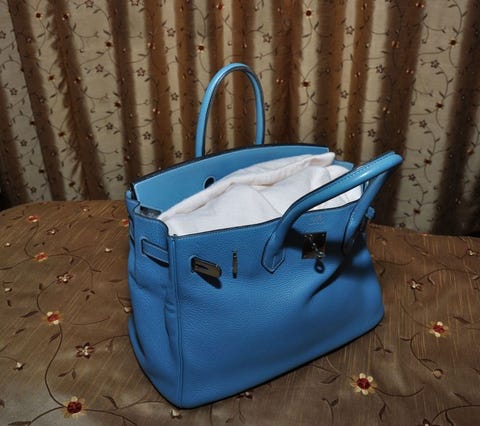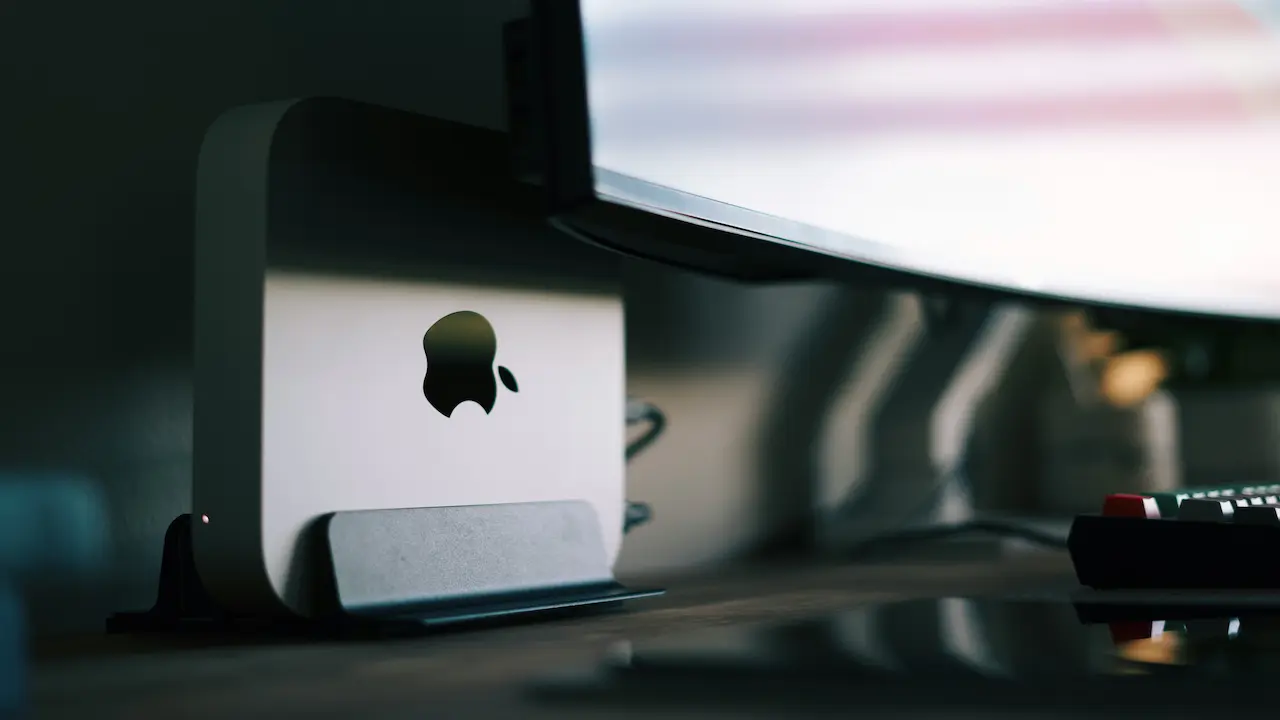Designer leather handbags are often the one real investment we’re willing to make when it comes to the wardrobe department.
And, when you’ve invested a lot of money in a handbag, making sure it’s a forever item is a must. But taking care of leather goods can be tricky – and when it’s an item you seriously care about, much more is a stake.
So, how do you clean a leather handbag without ruining it? To bring you the best answers, we spoke to the experts at The Handbag Clinic – who specialise in designer handbag care and restoration.
Do you need to protect your handbag?
When thinking about a bag’s condition the place to start, Retail Director and Co-founder of The Handbag Clinic, Charlotte Staerck, says is with prevention. In fact, Charlotte says this step this is the most important thing you can do for your bag.
“Clean and protect it regularly, leather is a skin and needs its own kind of skin care regime too! We recommend that you protect your bag from day one.”
“You will then need to keep on top of it – keeping a bag looking great is about regular maintenance rather than a quick fix.
“Using helpful tools and tricks to avoid signs of wear will also keep your bag looking new for as long as possible. Bag pillows are also a great way to keep your bags structured while being stored and a handbag hook will allow you to avoid placing your bag on floors, the hook folds out to fit on most tables and bar areas.”
What you need to protect your bag
“At its most basic level, the must-have for every handbag is a make-up bag and a pen lid. Throwing makeup brushes, a smashed powder, lipstick that loses its lid or an open pen into your bag causes the bag to become heavily stained on the interior. Makeup and ink are some of the hardest stains to remove from fabric with the high oil content and the interior of your bag needs protecting just as much as the outside.
Consider buying Stain Cover just in case your bag gets messy… at the Handbag Clinic you can insure up to 15 handbags against stains for a small fee per month.
How often you should clean your bag?
Perhaps not surprisingly, the regularity with which you need to clean your bag depends on how often you use it. The more it gets a run out on the top, the more cleaning it will need.
“If you use the bag every day you should do this every two to three months. If it is more of a weekend bag or when you are heading out for special occasions every six to nine months will be enough to keep your item protected.”
This content is imported from Instagram. You may be able to find the same content in another format, or you may be able to find more information, at their web site.
How to clean your handbag at home
While you might love the idea of taking your bag to a specialist to be pampered and cleaned every month, for many of us, that’s not very realistic. But there are many steps you can take at home to keep your pride and joy in tip-top shape between specialist appointments, explains Charlotte. Here’s what you can do for a quick refresh:
- Start by cleaning the bag inside and outside, creating a foam with the cleaning solution and massaging this into the bag.
- Leave this to dry for a couple of minutes before applying the protection cream – take extra care with the handles, corners and frequently touched areas. You then leave this to dry for ten minutes before buffing off any excess.
- This process takes no more than 15 minutes and could save you a fortune on restoration treatment in the future – it will also keep the value in your bag getting the most out of your purchase.
- If you have a light-coloured bag or if it’s a very absorbent leather you may want to repeat the protection process a couple of times to really look after those easily stained leathers.
- If you don’t have time to do the full bag focus on the main areas such as the handles, giving these a quick wipe down and protect will keep them looking fresh for longer.
“Having the right cleaning and protective products on hand at home is essential for optimum maintenance. Our care kits come with everything you need including sponges, cloths and a brush in the suede kit so you have all the tools required to keep your bags looking great.”
How to remove liquid stains
“The most common issue we see at Handbag Clinic is a liquid stain on a bag,” explains Charlotte. “Most items in luxury fashion are made from lightly treated leathers for their luxurious butter soft feel, however this means they are very absorbent. As bags are used outside and inside, they are prone to coming into contact with common liquids such as rain water, beverages, perfume leaks and, believe it or not, hair dyes.”
This content is imported from Instagram. You may be able to find the same content in another format, or you may be able to find more information, at their web site.
“Always protect your handbag when taking it to the salon as dye splashes are one of the most common liquid stains we treat. As always, prevention is better than a cure and upfront protection is the best way to avoid a spillage/accidental marking becoming an actual stain.
“Obviously accidents do happen though, so if you accidentally stain your bag there are some steps you can follow to reduce the staining and ensure this causes as little damage as possible:
Note: Do not apply water or any cleaning products you may have to hand – you will at this point only make the staining worse.
- Start by blotting the stained area as soon as possible with a clean, dry cloth or tissue – you want to absorb as much of the liquid as possible.
- Once you have removed the excess liquid, you should then blot the stained area with a damp cloth or tissue using warm water only.
- Start at the outside of the stain and work inwards; this will stop the stain from spreading outwards. If you have one of our Handbag Care Kits, you should clean the stained area with the cleaner in the kit.
- As before, you should then proceed to dab the stained area with a dry cloth or tissue to absorb any left-over water or cleaner. Never rub the stained area as this can cause the stain to spread.
- Your bag is best left to dry in a warm room. Do not apply heat directly to the stained area as this can set the stain.
If any staining remains once dried, contact Handbag Clinic for a quote, stain removal starts at just £50.
This content is imported from Instagram. You may be able to find the same content in another format, or you may be able to find more information, at their web site.
Things to remember:
Stick to proper cleaner… The Handbag Clinic says: “Never use baby wipes, vinegar or any other ‘home remedy’ for cleaning or stain removal. Many of these products have chemicals and substances in them that can cause damage to the colour, dry the leather out, create a build up of grease in the leather and any number of other problems.”
Always spot-test a cleaning method before you use it… preferably somewhere on the inside of the bag that can’t be seen by prying eyes.
The key to removing ink marks is to treat them straight away… your first and best bet is to take your bag to see a professional as soon as possible. If you’re unable to, try a special ink removing product for leather and follow the care instructions, making sure to condition the area afterwards and leave to dry properly.
If the ink stains are old… don’t try to remove these yourself. They will likely be too stubborn and will need professional care.
This content is imported from Instagram. You may be able to find the same content in another format, or you may be able to find more information, at their web site.
How to remove odours
“Removing bacteria is the first step to removing stubborn odours, so the bag needs to be cleaned inside and outside,” explains Charlotte. “Many people think that they only need to look at the inside of their bag but both need to be thoroughly cleaned to remove odour.”
- Check the materials used on your lining and exterior and ensure you have the right products for all materials used on your item.
- If you have a lining that easily pulls out of the bag, pull this out and give it a really thorough clean.
- Get into all pockets to clear out that bacteria that will be causing the smell.
- Focus on the handles and anywhere oils may have been absorbed as these can be a cause of odours.
- Once cleaned, finish with protection cream on any leather on the bag (our version is actually scented with that rich leather smell so it will help to reduce any unwanted odours). On fabrics, a fabric freshening spray will help but do not saturate the fabric or you may risk warping the bag or damaging any leather or metalwork.
What not to do
Never use water on grease stains… these should simply wipe off leather surfaces.
Do not use saddle soap… it’ll most likely be too strong for the leather on your bag and could cause discolouring.
Don’t leave your handbag in direct sunlight… it can cause the colour to fade and damage the leather.
Avoid holding your handbag if you’ve just applied hand cream… or you’re just ASKING for grease stains.
Can you prevent or fix any scratches on the hardware?
We might sound like your Grandma but, it’s true, prevention is much better than a cure. Hardware damage on a bag can be due to too much stress on the strap/s or details (e.g. overfilling your bag, or using it to carry heavy items).
“Whilst we all feel we need to carry a lot around with us in our handbags we need to remember that they are a fashion accessory and not designed to carry a huge load,” explains Charlotte.
This content is imported from Instagram. You may be able to find the same content in another format, or you may be able to find more information, at their web site.
“If you have a turn lock or any closure that requires some form of press or turning action and you struggle to close the item because you have too much in your handbag – then it is likely that you will be putting too much pressure on this causing friction, scratching and potentially risking the metal work breaking. The same applies if you overload a bag with a chain handle or strap. The more pressure on the chain, the quicker it will become worn or broken.
“You can keep metal work looking fresh with a simple metal polish but you need to avoid this coming into contact with the rest of the bag.
It’s particularly important to look after any designer logo hardware because, once these custom plates and details are damaged, they’re a lot harder to replace.
“We can source or replace a vast range of broken metal work but… we are unable to source branded pieces, so you need to be extra careful with any branded metalwork elements,” adds Charlotte.
“For worn or scuffed metal work re-plating is a great option and comprises the required composition of metals. Some branded metalwork is only thinly plated, which means it can be difficult to get high enough levels of conduction to re-plate it.”
How to store your handbag
Keep your bag stuffed while you’re not using it… to help keep its shape better.
If your tote came with a dust bag… use it. These aren’t just for pretty packaging – they are intended to keep your bags dust-free when they’re not being used.
Keep it covered… If you don’t have a dust bag an old pillowcase will do!
Like this article? Sign up to our newsletter to get more articles like this delivered straight to your inbox.







More Stories
Buying a Condo
Red, White and Blue – What Are The Timeshare Seasons?
What You Need to Know About Selling Your Condominium in Today’s Market